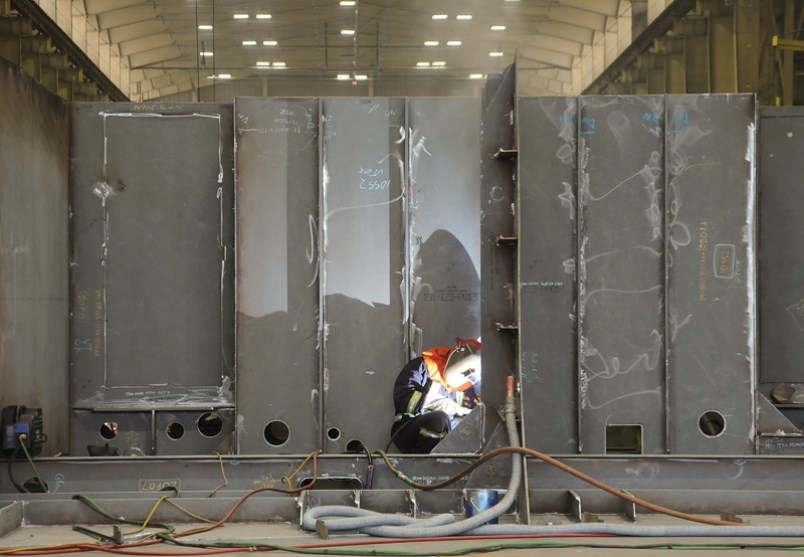Seaspan Shipyards is scrambling to rustle up more work for next year after concluding delays in the federal shipbuilding program could result in the layoffs of hundreds of skilled tradesmen at the shipyard if a fix isn’t found.
That sobering news was shared with workers at the shipyard following a recent review of timelines which set out when ships are expected to be designed and built in the yard under the federal government’s national shipbuilding strategy.
Seaspan won the right to bid on up to $8 billion of non-combat federal shipbuilding in 2011.
The national shipbuilding program was intended to end the boom-and-bust cycle for winning shipbuilders by providing steady work for those yards for the next 30 years.
But the program has experienced growing pains as Seaspan began work on three federal fisheries vessels, the first major shipbuilding to take place in the yard in at least two decades. Those ships are now at least six months behind schedule.
More concerning to the shipyard, however, are delays in preliminary work on the fourth ship – an offshore science vessel – which mean Seaspan won’t be ready to start building that until 2019 – a year later than planned.
In a worst-case scenario, “There’s going to be big layoffs, a year or a year and a half when there’s not going to be any work between the two ships,” said Butch Sidey, business agent for the Marine Shipbuilders Union local 506, which represents unionized workers at Seaspan.
If that happens, there could be a long-term impact to the workforce, which currently numbers about 600 tradespeople at the shipyard.
If layoffs occur, “It’s going to be very hard to get these individuals back. The skill loss is massive,” said Sidey.
“They quit their jobs to come to work at Seaspan,” he said.
Under the national shipbuilding program, “everybody was promised long-term jobs for 30 years,” he said. “We’ve had some people say (if they get laid off), ‘Look, I’m not coming back.’”
But Seaspan hasn’t thrown in the towel just yet.
“How big is the gap, how long is the gap will depend in part on how successful we are in going to the market to find new opportunities,” said Tim Page, vice-president of government relations at Seaspan.
Page said the shipyard is aggressively pursuing new work to fill in the schedule and has recently landed some two and three-month contracts for refit work on other federal vessels including a Coast Guard ship, an orca-class Royal Canadian Navy patrol vessel and a commercial research ship which will keep workers busy in the yard for a while.
Page said he couldn’t comment on what caused the delay in the fourth ship’s anticipated construction schedule.
“Both Canada and the shipyard have learned a great deal since we began working together back in 2011,” he said.
Along with drumming up more repair work, various solutions have reportedly been floated for filling the hole in the shipbuilding schedule, including the possibility of building federal ships in a different order.
“Nothing is being ruled out and nothing has been decided on,” said Page.
Seaspan will discuss the issue with Ottawa over the next two months.
Seaspan previously pulled out of a bidding process for $140 million of major refit work on two large B.C. Ferries – after being shortlisted in 2015 – saying the shipyard was too busy to take it on. A Polish shipyard won that work and last month The Spirit of British Columbia left for overseas. It is expected to return in the spring of 2018. A second ship will head out next fall for the same work and return in the spring of 2019.
George McPherson, spokesman for the Shipyard General Workers Federation, a lobby group representing several shipyard unions, said he never bought the argument that local shipyards couldn’t do the refit work on the ferries. “I think they could have done it. I don’t accept the excuse they had too much going on with the federal government and the national shipbuilding strategy,” he said.
McPherson said while there’s no point bemoaning the decision now, he’ll continue to pressure the province to make sure no more shipyard work leaves B.C.



